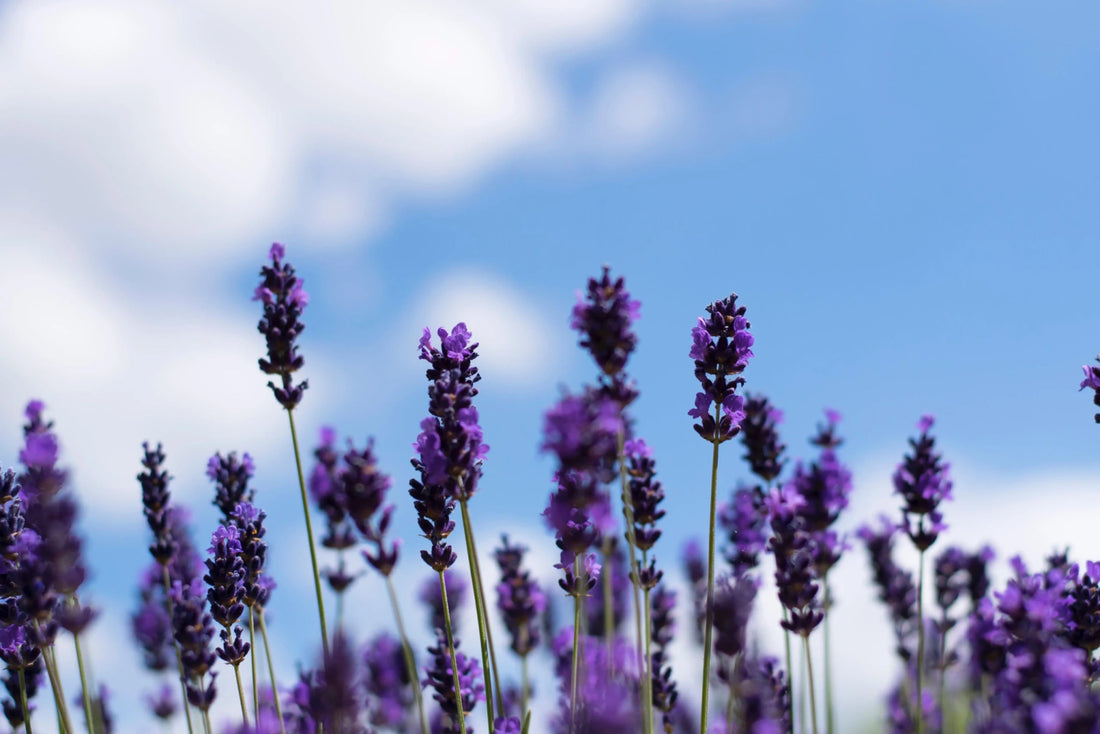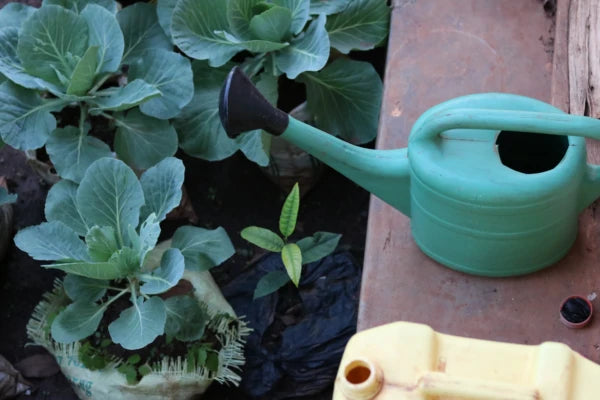
Save Water, Grow Green: How to Water Your Landscape Wisely During Droughts
Share
In regions facing drought and hot weather, maintaining a healthy lawn and garden can be tough. Fortunately, with the right approach and mindful water management, you can maintain a beautiful and sustainable lawn and garden, even during the most challenging drought conditions.
Plan Your Water-Wise Garden
Select Drought-Resistant Plants
Drought-resistant plants are specially adapted to thrive in dry conditions, requiring minimal water to maintain their health and beauty. Native plants are also a great option as they are already acclimated to the local climate and will require less water.
Numerous drought-resistant plants can add beauty and vibrancy to your water-wise garden. Some popular options include:
- Lavender (Lavandula)
- Agave
- Russian Sage (Perovskia atriplicifolia)
- Yarrow (Achillea)
- Rosemary (Rosmarinus officinalis)
Design a Water-Efficient Landscape

To maximize water conservation in your garden during a drought, it's essential to design a water-efficient landscape.
Grouping plants with similar water requirements together allows for more efficient watering. It allows you to tailor irrigation schedules to meet the specific needs of different plant groups, minimizing water wastage. Moreover, creating shade with trees or structures can shield plants from direct sunlight, reducing water loss due to evaporation.
You can also consider introducing a rock garden. Rocks and pebbles serve as excellent natural mulch, preserving moisture in the soil and creating visually appealing textures.
Efficient Watering Tips During Drought
Understand Watering Restrictions
When facing a drought, it is crucial to understand and adhere to any watering restrictions that may be in place in your local area. Familiarizing yourself with these restrictions and guidelines is the first step towards efficient watering practices.
These restrictions may include specific watering days, time frames, or even limitations on the use of certain irrigation systems. Once you are aware of the watering restrictions, adjust your watering practices to comply with the regulations. If there are designated watering days, ensure you water your lawn and garden only on those allotted days.
Best Time to Water

Watering your garden in the early morning, preferably before 10 a.m., offers several advantages. First of all, the cooler temperatures and lower humidity in the morning helps reduce water loss due to evaporation.
Morning watering also allows foliage to dry quickly, decreasing the risk of fungal diseases caused by extended moisture on leaves.
Water Deeply
When facing a drought, one of the most effective watering practices you can adopt is deep watering.
Deep watering involves providing a substantial amount of water to penetrate the soil and reach the root zone of plants. This method encourages roots to grow downward, seeking water at lower soil levels. As a result, plants develop more extensive and resilient root systems, making them better equipped to access water during droughts.
Aim to water your lawn and garden to a depth of at least 6 inches. Use a soil probe or a simple tool like a screwdriver to check the soil's moisture level. Insert the probe into the soil, and if it easily reaches the desired depth, your watering was effective. If not, continue watering until the moisture reaches the desired depth.
In terms of frequency, it's important to balance the need for deep watering with the avoidance of water wastage. Instead of frequent light watering, aim for less frequent but more substantial watering sessions.
Water the Roots
Watering directly at the root zone allows the water to be absorbed efficiently by the plant's root system. This targeted approach ensures that the water reaches the area where the plant needs it most, promoting better nutrient absorption and overall plant health.
Two excellent techniques for watering the roots are drip irrigation and soaker hoses. Drip irrigation delivers water directly to the base of each plant through a network of tubing and emitters. Additionally, drip irrigation can be combined with timers and sensors to automate the watering process and further optimize water usage.
Soaker hoses are another effective option. These hoses release water slowly along their length, allowing it to seep into the soil gradually. Soaker hoses are particularly useful for beds, shrubs, and trees, as they provide a slow, steady supply of water while minimizing water waste.
Watering Priorities

Not all plants have the same water requirements. Some are more drought-tolerant and can survive with less frequent watering, while others need regular moisture to thrive.
When water resources are limited, focus on watering high-priority plants first, such as young seedlings, newly transplanted or recently established plants, and those known for their higher water needs.
Flowering plants like roses and hydrangeas, as well as certain vegetables like tomatoes and cucumbers, tend to demand more water to thrive. They should be at the top of your watering list during a drought.
Drought-resistant plants, native species, or established perennials usually have lower water requirements and can withstand dry periods better. While they may still benefit from occasional watering, they can be lower on the watering priority list.
Lawn Care During Dry Spells

Even during a drought, it's possible to maintain a healthy lawn with proper care and attention.
Adjust Your Mowing Height
During a drought, raise the cutting height of your lawn mower. Taller grass blades provide more shade to the soil, reducing evaporation and preserving soil moisture. Avoid cutting more than one-third of the grass height at a time to avoid stressing the lawn.
Aerate the Soil
Aerating your lawn helps improve water penetration and absorption into the soil. By creating small holes in the lawn, you allow water to reach the grassroots more effectively, promoting healthier growth.
Avoid Fertilizing
During a drought, it's best to avoid fertilizing your lawn. Fertilizers promote growth, which requires more water. Instead, focus on maintaining the health of your grass through proper watering and other care practices.
Weed Control

Weeds compete with your lawn for water and nutrients. Implement effective weed control methods to minimize their presence and reduce their impact on your lawn's water requirements.
Mulch
Mulch acts as a protective barrier that covers the soil surface, reducing evaporation and preventing water from escaping into the atmosphere. One of the primary advantages of mulching during a drought is its ability to conserve soil moisture.
It also helps regulate soil temperature by insulating it from extreme heat.
Mulch also plays a vital role in preventing soil erosion. During dry spells, the soil becomes more susceptible to erosion due to reduced vegetation and increased exposure to wind and water.
Maintain & Upgrade Your Irrigation System
To ensure efficient water usage during a drought, it is essential to maintain and, if necessary, upgrade your irrigation system.
Inspect for leaks and repair promptly
Regularly check your irrigation system for any leaks or damaged components. Leaks can lead to significant water wastage, undermining your efforts to conserve water during a drought. Promptly repair any leaks or issues to ensure the system operates at its best.
Clean and adjust sprinkler heads
Over time, sprinkler heads can become clogged or misaligned, leading to uneven water distribution. Clean the heads regularly to remove any debris or sediment that may hinder their performance. Additionally, ensure the sprinkler heads are properly adjusted to avoid watering non-landscaped areas.
Check for coverage and efficiency
Assess the coverage of your irrigation system to ensure all areas of your lawn and garden receive adequate water. Make adjustments as needed to address any areas that are consistently under or over-watered. This ensures efficient water usage and helps maintain plant health.
Upgrade to a Smart Irrigation Controller
Consider upgrading to a smart irrigation controller that utilizes weather data and advanced algorithms to optimize watering schedules. These controllers adjust irrigation based on factors such as rainfall, temperature, and evapotranspiration rates, ensuring water is applied efficiently and only when necessary.
Reduce Herbicide
During a drought, it becomes crucial to reassess the use of herbicides in your lawn and garden care routine. Herbicides are most effective when the soil contains sufficient moisture, and weeds are actively growing.
However, during dry conditions, weeds are already under stress, making herbicides less efficient in controlling them. Moreover, using herbicides on drought-stressed turf can potentially cause damage, especially during warm temperatures.
Avoid Pesticide
Chemical pesticides can be detrimental to the delicate balance of your garden ecosystem, especially during a drought. When water is scarce, the residual effects of pesticides can become more concentrated in the environment, posing the risk of unintended harm to the soil and nearby water sources.
Additionally, commonly used pesticides rely on moisture to achieve their desired effectiveness. Without adequate moisture, the efficacy of these pesticides in controlling target pests is significantly diminished.
Extra Water-Saving Tips for Outdoor Areas
Use Gray Water
Collect and reuse household water, known as gray water, for watering your outdoor areas. Use water from activities such as dishwashing or showering, after taking necessary precautions and ensuring it's suitable for your plants.
Install Rain Barrels
 Rainwater harvesting is an excellent way to collect and store rainwater for later use. Install rain barrels beneath downspouts or gutters to capture rainwater runoff from your roof. This collected water can be used for watering plants during dry periods, reducing the need for municipal water.
Rainwater harvesting is an excellent way to collect and store rainwater for later use. Install rain barrels beneath downspouts or gutters to capture rainwater runoff from your roof. This collected water can be used for watering plants during dry periods, reducing the need for municipal water.